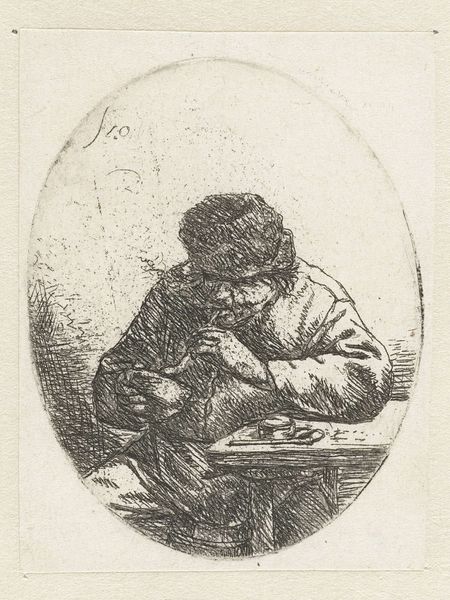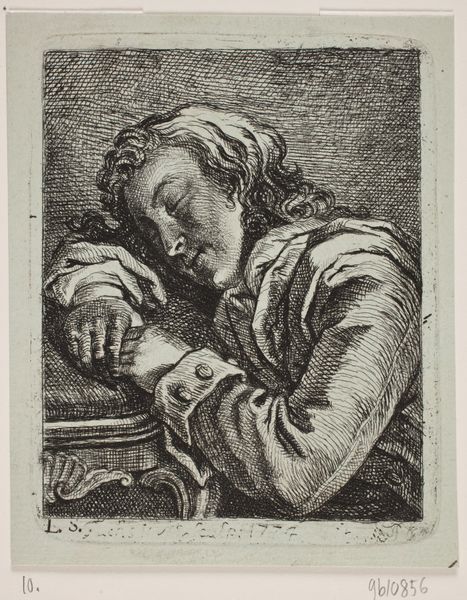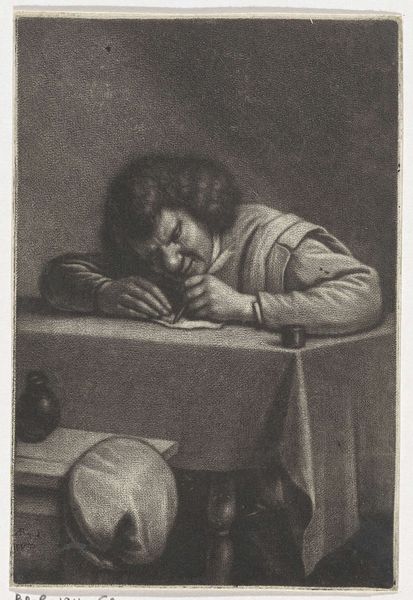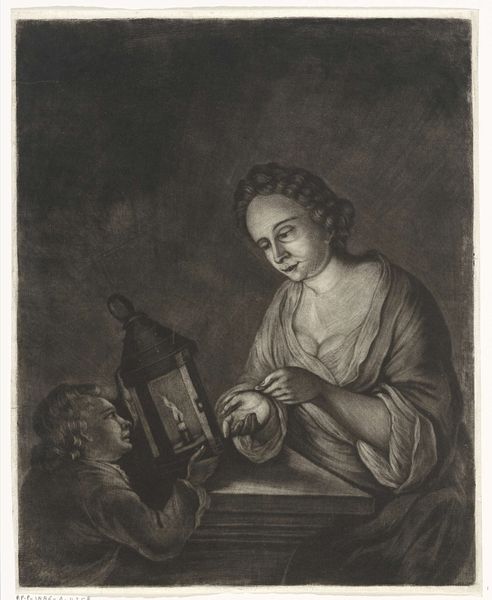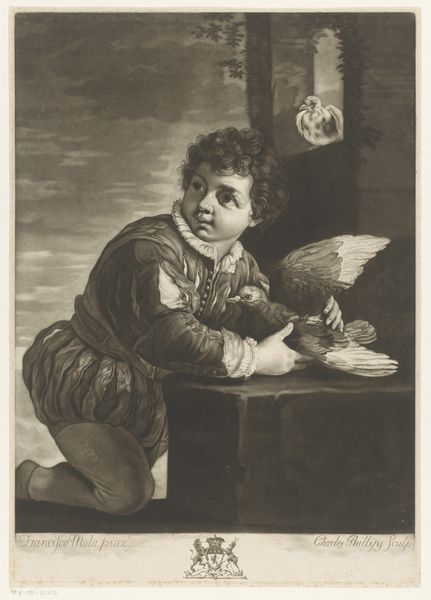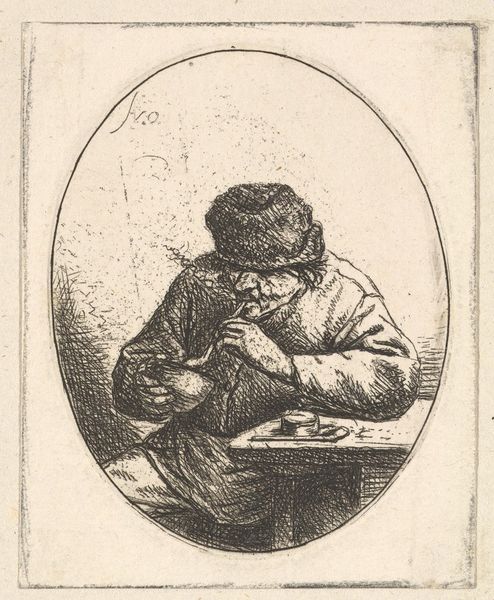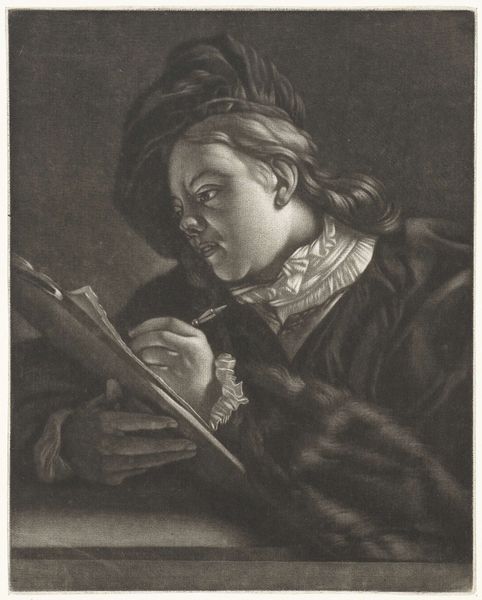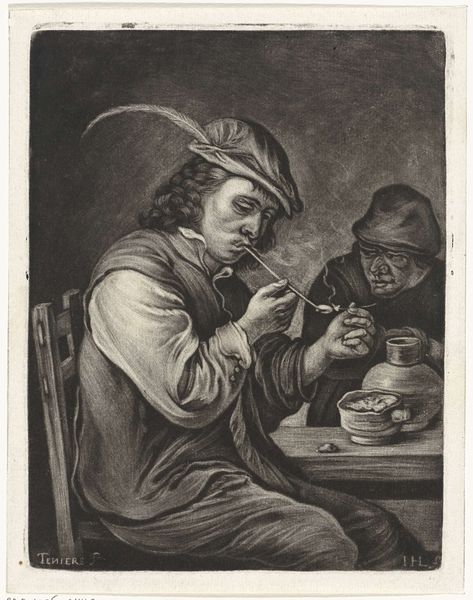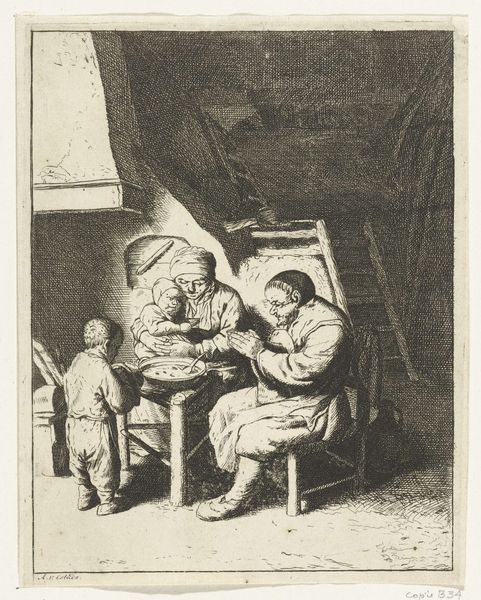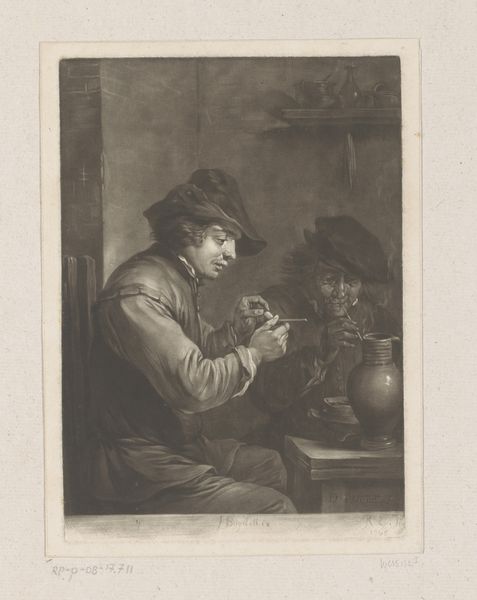
engraving
#
portrait
#
baroque
#
charcoal drawing
#
line
#
portrait drawing
#
genre-painting
#
engraving
Dimensions: height 250 mm, width 192 mm
Copyright: Rijks Museum: Open Domain
Curator: Here we have "Knikkerende Jongen," or "Boy Playing Marbles," an engraving made by Jacob Gole, dating from between 1670 and 1724, and now housed in the Rijksmuseum. Editor: The somber tones immediately strike me. Despite the subject matter being a game, there's a real gravity to the scene. The almost monochromatic palette amplifies the starkness. Curator: Absolutely. Considering the etching process Gole would have used, carefully incising lines into a metal plate and then inking and printing, we can appreciate the skill and labor that went into creating this effect. Note how the various tonal gradations emerge entirely from the linear marks and hatching. It is remarkable how the simple combination of black ink on paper evokes so much character! Editor: And that character reflects the broader Dutch social climate, I think. Genre scenes like this became incredibly popular. They offered a glimpse into everyday life, ennobling the common pastimes and reflecting a sense of national pride. Look at how centrally the game is positioned; leisure becomes almost symbolic of social well-being. Curator: Exactly, and the barrel upon which he plays - undoubtedly a used wine barrel- it’s not simply a found object but an act of re-purposing! It prompts us to think about resources, trade, and how art might subtly depict cycles of material consumption. It would be interesting to examine inventories of this time. Editor: It's easy to imagine the art market dynamics that encouraged this kind of work too. Engravings made art accessible and multiplied its reach, helping construct narratives about Dutch identity both at home and abroad. Curator: It's striking how a simple scene of a boy playing marbles contains so many layers of social and material history. Editor: Yes, a potent combination. The image becomes more than a picture of the Dutch golden age and opens our mind to how that age may be viewed in retrospect.
Comments
No comments
Be the first to comment and join the conversation on the ultimate creative platform.
